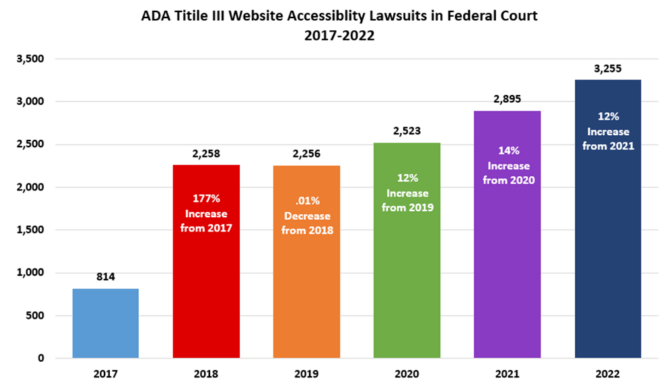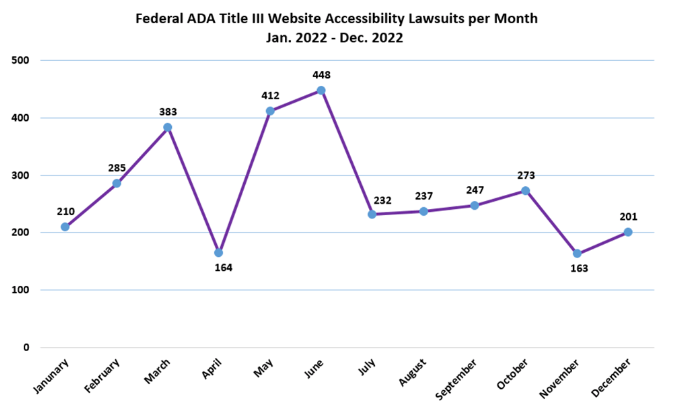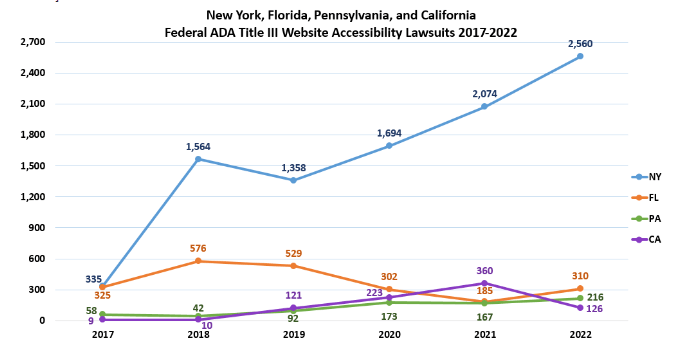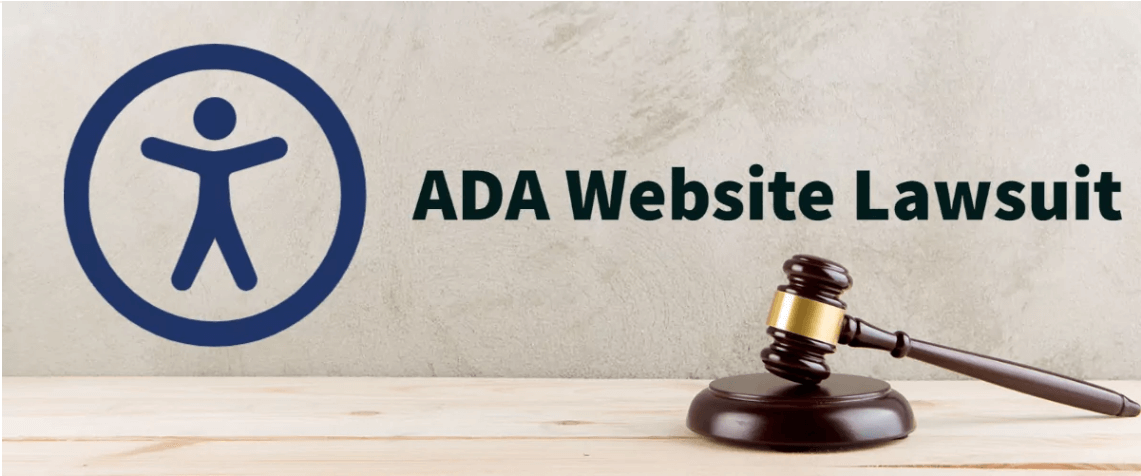Website accessibility lawsuit filings in 2022 set a new record, indicating a growing concern for online accessibility. In recent years, website accessibility lawsuits have become increasingly prevalent, and 2022 proved to be a year of record-breaking filings.
With the internet serving as a vital tool, ensuring that websites are accessible to those with disabilities, has become crucial.
Many of the lawsuits filed in 2022 centered around businesses failing to comply with the Web Content Accessibility Guidelines (WCAG). The WCAG guidelines provide a set of standards for website accessibility. These guidelines were developed by the World Wide Web Consortium (W3C) and are considered the industry standard for website accessibility. Failing to adhere to these guidelines can result in legal action. This is why it is essential for businesses to ensure that their websites are fully accessible.
The American with Disabilities Act
One of the key drivers of the surge in website accessibility lawsuit filings is the Americans with Disabilities Act (ADA). While the ADA was enacted in 1990, courts have begun only recently to apply its accessibility requirements to websites. With the increase in online business transactions, the need for accessible websites has become more apparent. This lead to a significant increase in lawsuits filed by individuals with disabilities who are unable to use certain websites. As such, businesses must prioritize website accessibility to avoid legal action and ensure websites are accessible to all users.
The best way to avoid a lawsuit is to make your website accessible and usable by those with disabilities. This can be done by following WCAG guidelines and testing your website on a regular basis.
With the right tools and effort, businesses can ensure their websites are accessible to all customers, regardless of disability. Doing so will not only help avoid costly lawsuits, but also enhance brand reputation.
Plaintiffs Set a New Record for Website Accessibility Lawsuit Filings in 2022
2022 was another record setting year for website accessibility lawsuits filed in federal court. The total number of lawsuits filed in federal court was 3,255. This was an increase of 360 cases from 2021. The lawsuits alleged that plaintiffs with a disability could not access websites that were incompatible with screen readers.
This 12% increase is just slightly lower than 14% in 2021, and matches the 12% increase we saw in 2020. While these numbers pale compared to the explosion from 2017 to 2018, the continued year-over-year increase is very significant.
ADA Title III Website Accessibility Lawsuits in Federal Court 2017-2022

Source: Seyfarth Shaw
Especially striking is the lawsuits made up 37% of Title III lawsuits filed in 2022, up 25% in 2021.
The first half of 2022 saw a steady climb from 210 in January to 383 in March. There was a dip to 164 in April, then spikes at 412 and 448 in May and June. The monthly numbers were more consistent at between July through October. There was a slight dip to 163 in November, before a December finish of 201.
Federal ADA Title III Website Accessibility Lawsuits per Month January 2022 – December 2022

Source: Seyfarth Shaw
Three States lead the pack
New York, Florida, and California federal courts continued to be the busiest by far. Florida regains the #2 spot and Pennsylvania besting California for the #3 spot. New York federal courts continued to be bombarded with lawsuits. There were 2,560 lawsuits in 2022. This continues from 2,074 in 2021, 1,694 in 2020, 1,354 in 2019, and 1,564 in 2018).
Florida was a distant second with 310 lawsuits. California federal courts saw only 126 lawsuits in 2022. This halts the trend of 359 in 2021, 223 in 2020, 120 in 2019, and 10 in 2018).
Federal ADA Title III Website Accessibility Lawsuits per State January 2022 – December 2022

Source: Seyfarth Shaw
New York, Florida, Pennsylvania, and California Federal ADA Title III Website Accessibility Lawsuits 2017-2022

Accessibility lawsuits are so few in California relative to New York. This is because New York courts have been more favorable toward plaintiffs, especially when the defendant is an online-only business.
Whether online only businesses are covered by the ADA remains unanswered by the Court of Appeals for the Second Circuit. With a few exceptions, district court judges in New York ruled online only businesses are covered by the ADA.
In contrast, California federal and state courts of appeals believe that online only businesses are not covered by the ADA. This makes it more difficult (if not impossible) for plaintiffs to sue online-only businesses for accessibility violations. Thus, we predict fewer website accessibility cases in both California state and federal courts in the future.
These numbers do not account for the many demand letters sent out by law firms. These numbers also do not include lawsuits about inaccessible mobile apps, unless it includes website accessibility.
Conclusion
In 2021, we saw a record-breaking number of website accessibility lawsuit filings in California, New York, and Texas. This is likely to continue into 2022 and beyond as disabled individuals become more aware of their legal rights. Businesses must take proactive steps to ensure that their websites and applications meet the legal requirements of the ADA.
To comply with the ADA, businesses must ensure their websites, software, and hardware are accessible for persons with disabilities. This includes making sure that the content, audio, and video files are accessible, as well as the website’s overall design. To do this, businesses must identify and remediate any barriers to accessibility, and test their websites for accessibility regularly.
The increasing number of website accessibility lawsuits should serve as a wake-up call for businesses to take website accessibility seriously. By ensuring websites are accessible to all, businesses not only avoid legal issues, but enhance user experience for all customers.









